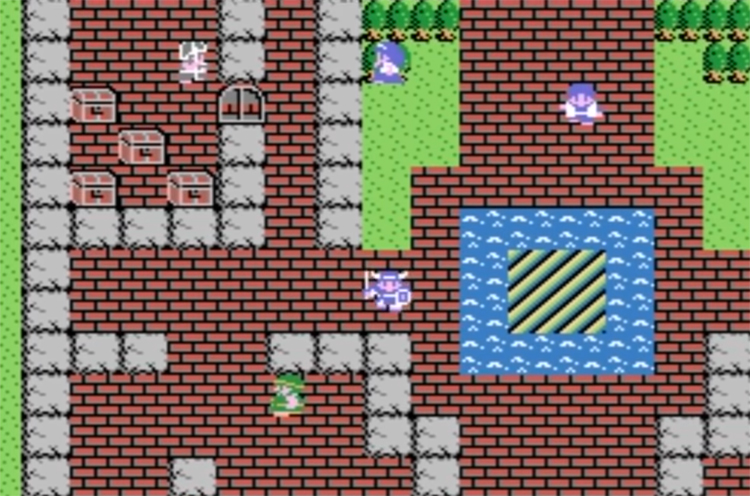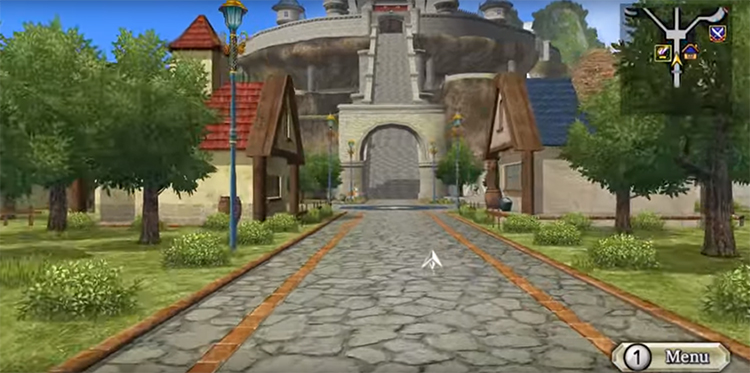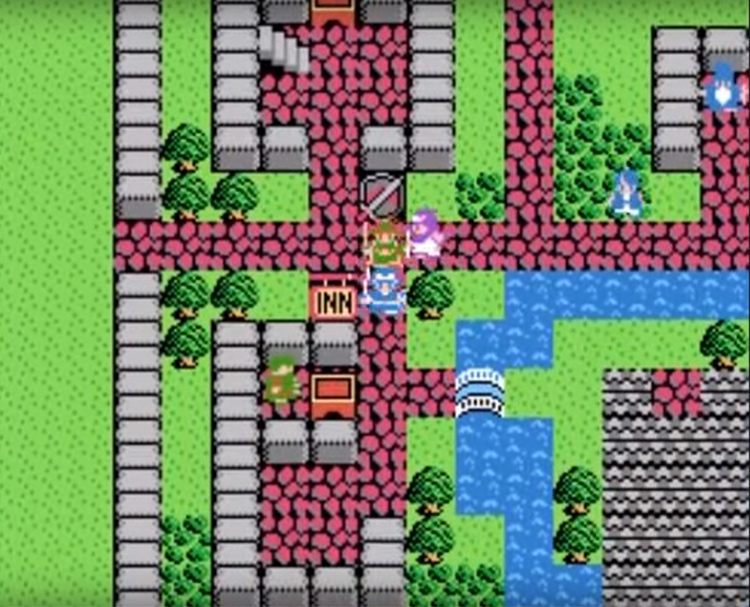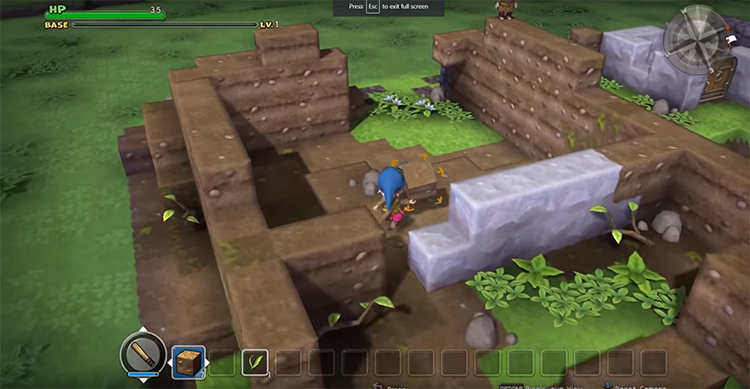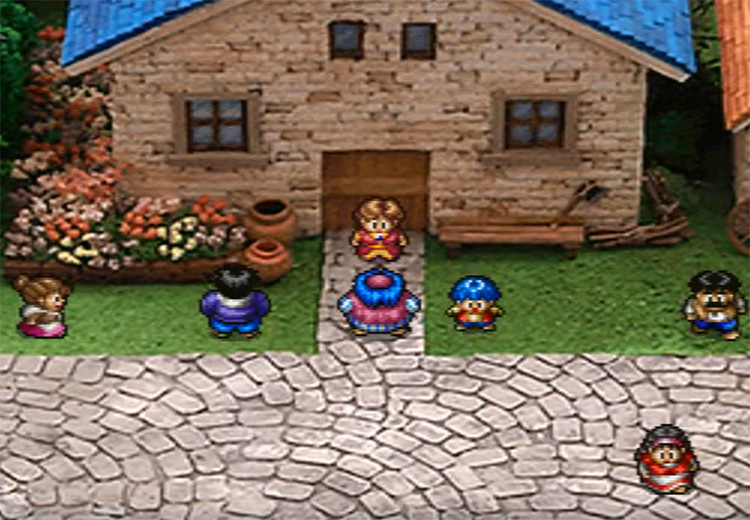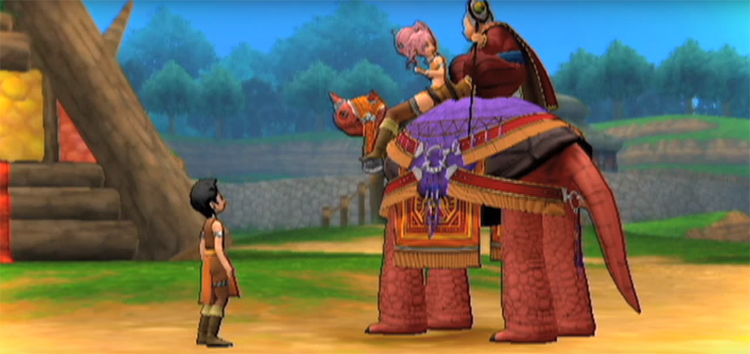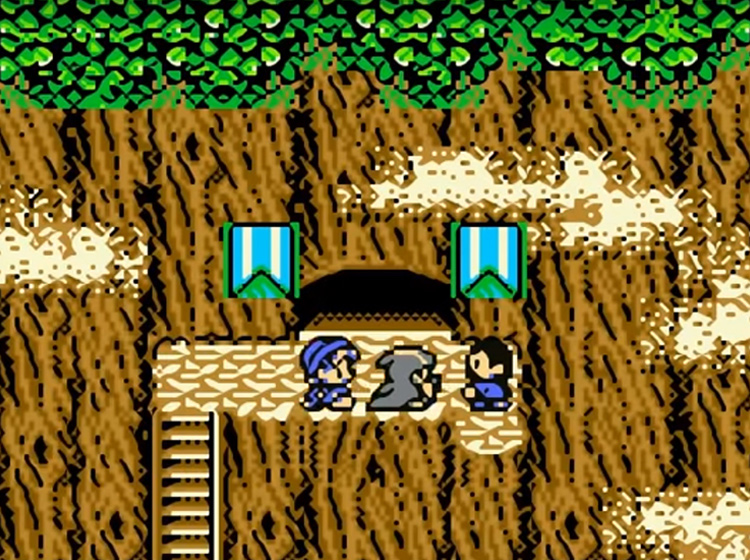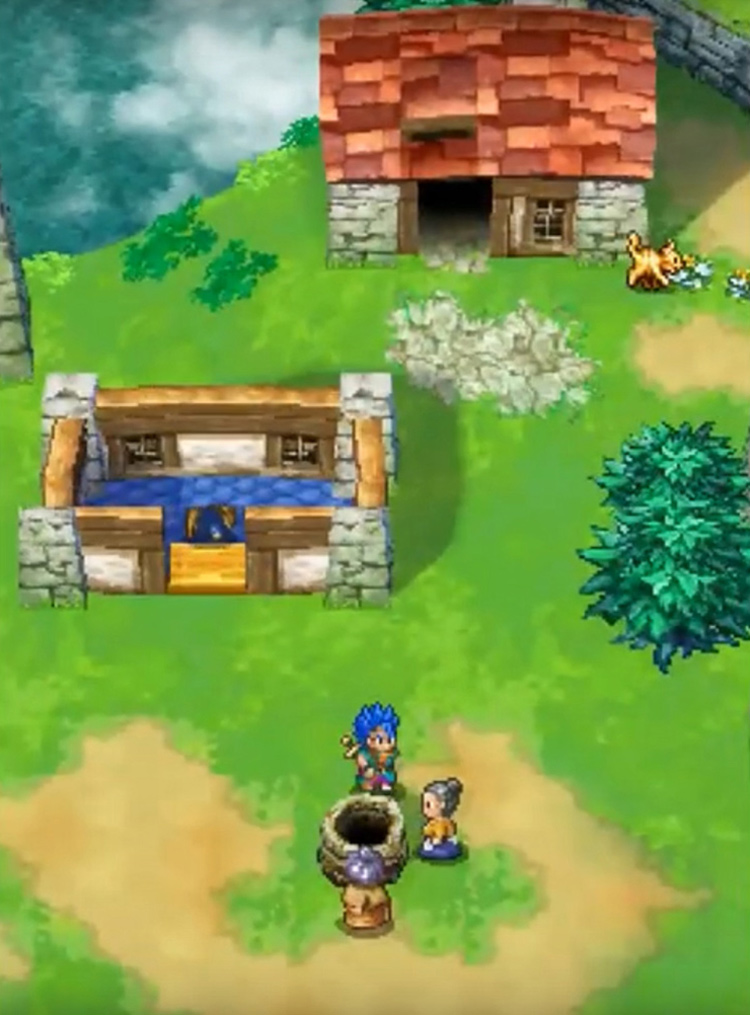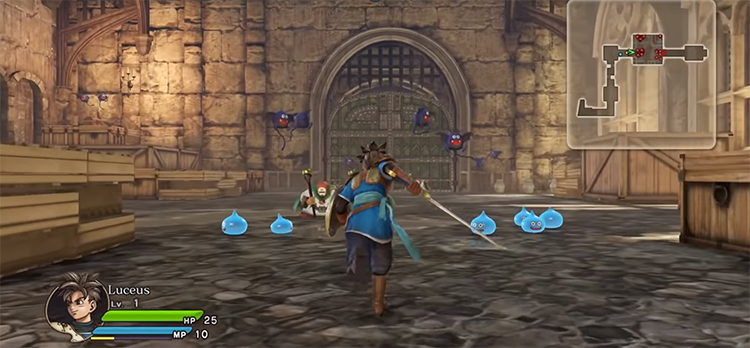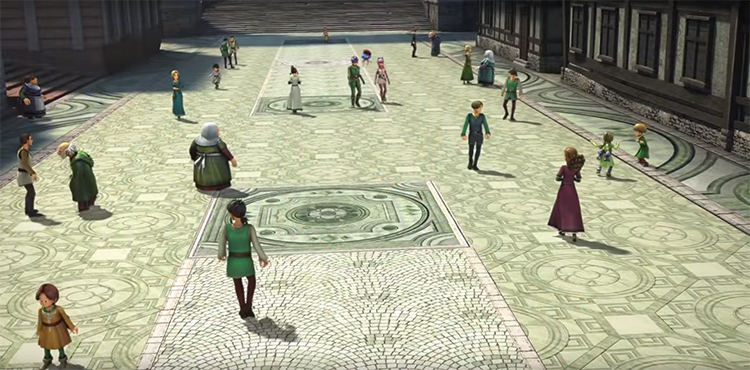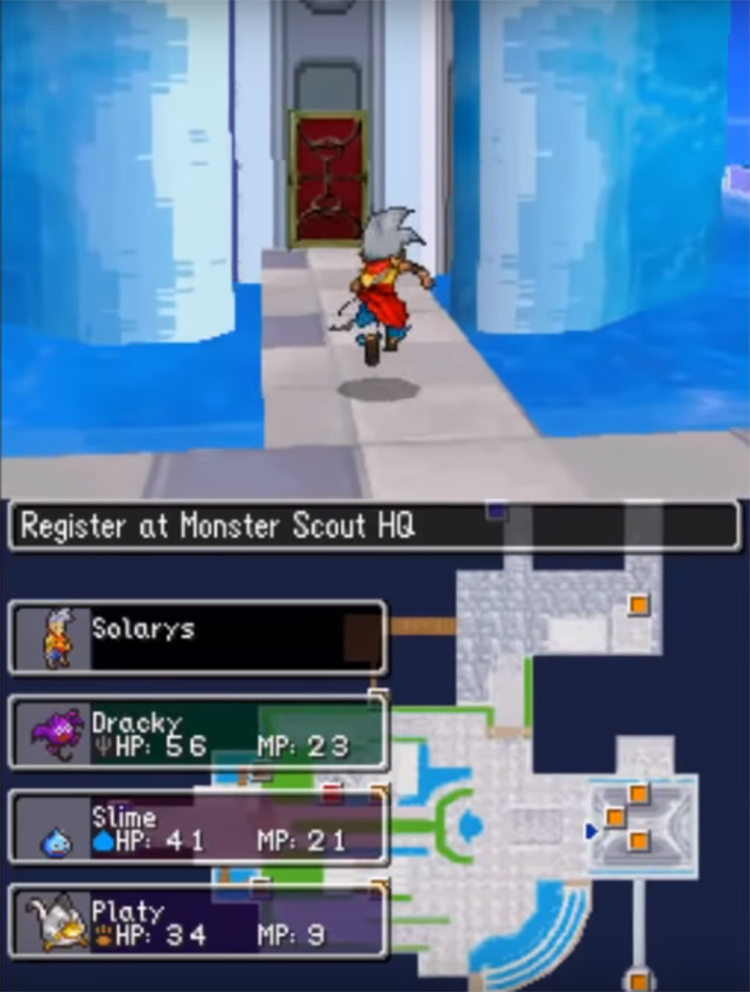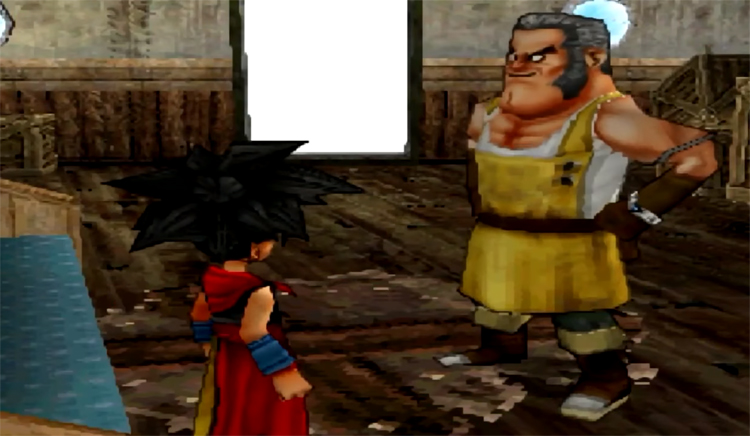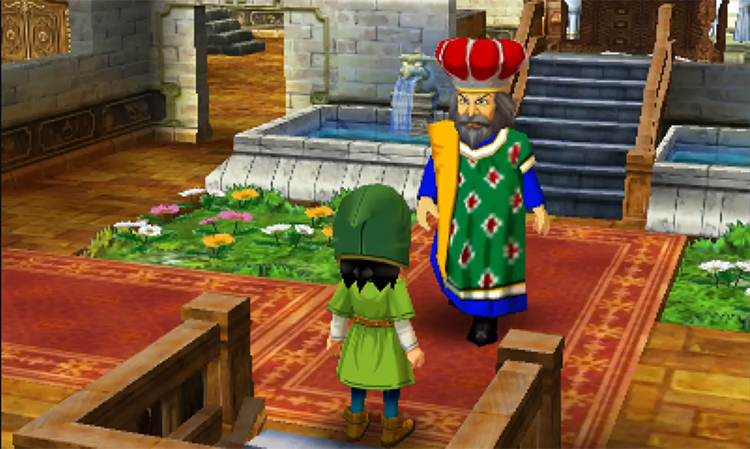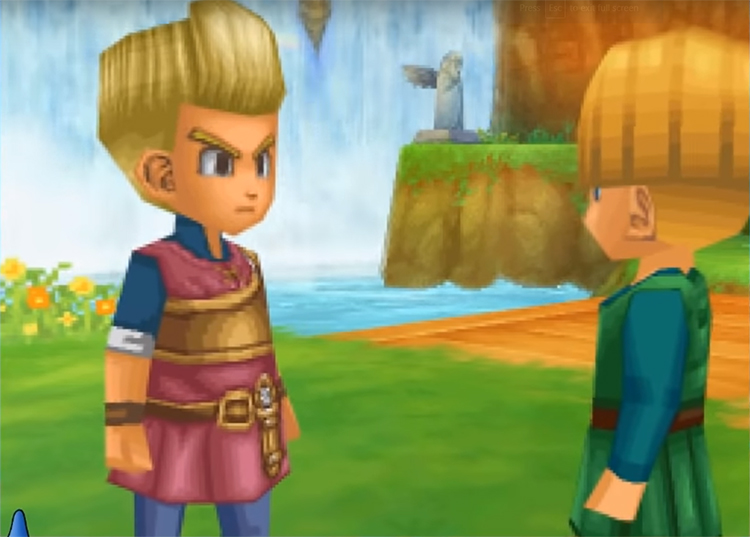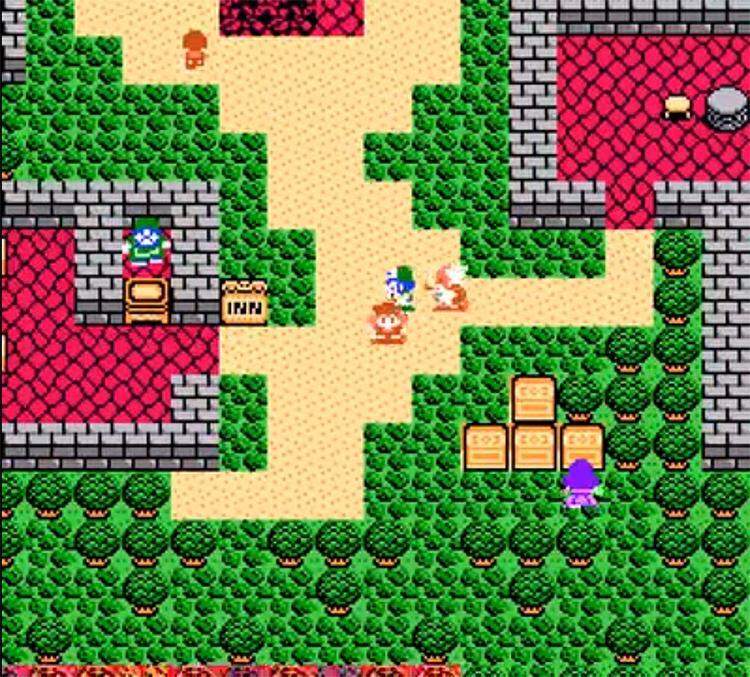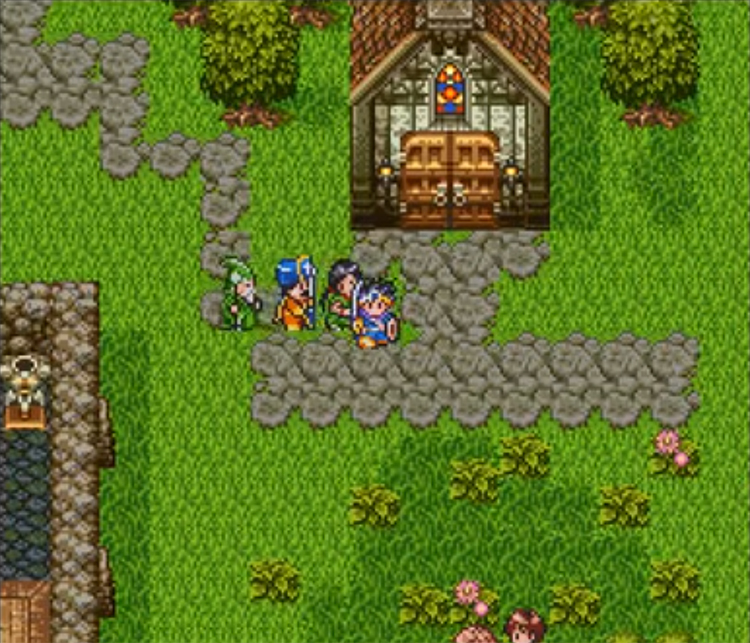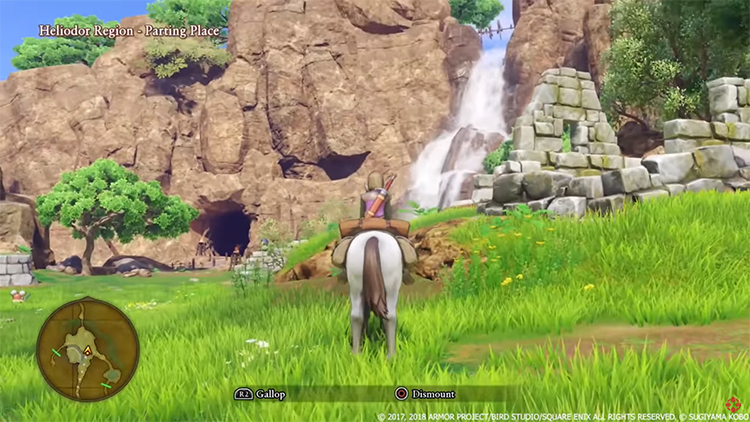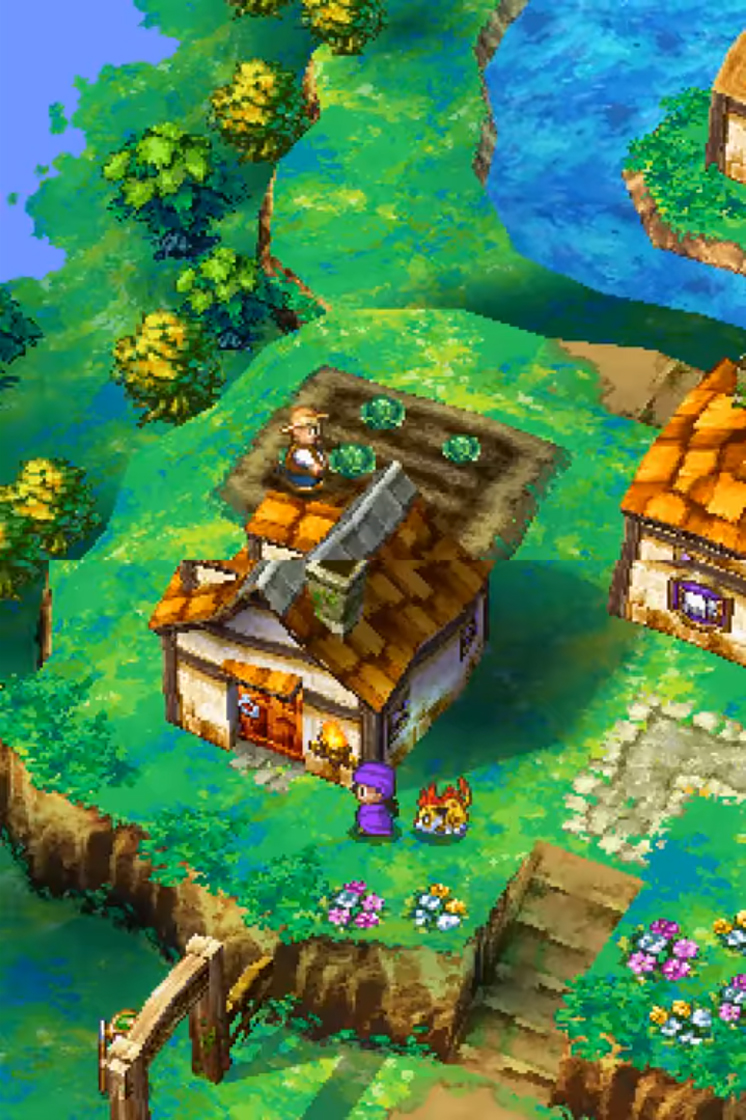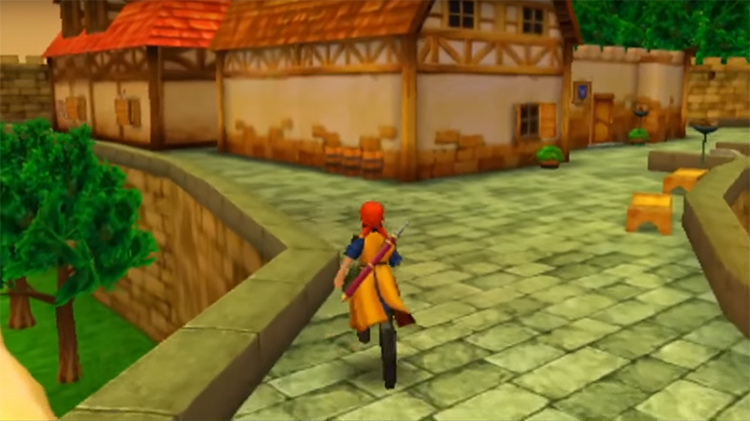It’s one of the very few long-running series with virtually no bad games, staying on an upward climb ever since 1989. It has a lot to do with staying true to their core concept instead of rebooting the series every couple of releases the way franchises like Digimon or even Final Fantasy tend to do. It’s always relatively the same game, but telling new stories, introducing new characters, and taking advantage of new possibilities in a way that only serves to polish an already solid formula. Of course, Akira Toriyama’s art direction and involvement with the games have been key to the franchise’s success. All by slowly crafting its rough, somewhat goofy but profoundly memorable personality. Once you’ve cleared a DQ game, you’ll never forget it. And it’s my pleasure to rank through all of the Dragon Quest roster to reminisce with longtime fans and help newcomers dip into the iconic series.
20. Dragon Quest (1989)
I was very confused when I realized the original Dragon Quest for the NES belonged at the very bottom of the list. But with a franchise as prolific and constantly improving as DQ, maybe it shouldn’t come as a surprise. It was a simple game, focused on exploring a fantasy world and gathering clues that would help you to rescue a princess from an evil dragon lord. What made Dragon Quest – known as Dragon Warrior in the US for copyright reasons – so unique was the amount of care put in by developer Chunsoft to make it a memorable experience. Colorful and beautiful sprites, an expansive overworld, a complex combat system, and an engaging story, allowed DQ to spearhead a whole new generation of RPGs. Despite all of this, the game is lacking in many areas when contrasted with modern standards. And even its own direct sequels. I mean, only one save spot in the entire overworld? Come on!
19. Dragon Quest Swords (2008)
DQ didn’t only pioneer a new generation of RPGs back in the day, but also a new generation of motion-controlled games when the Wii first came out. Not many people know about Dragon Quest Swords, but that has a lot more to do with a virtually nonexistent marketing campaign than its overall quality. It’s a bit like a sword-fighting version of Link’s Crossbow Training, except this game has a more fleshed-out story, and you’ll look 300% more ridiculous while playing it. Other than engaging gameplay and pretty graphics for its time, this game is notorious for its solid voice acting, which is always a plus.
18. Dragon Quest Heroes: Rocket Slime (2006)
In this surprisingly entertaining NDS title, you control one of DQ’s iconic mascot slimes, doing your best to protect your home and those you care about. You’ll solve puzzles, power-up your city-sized slime-shaped tank, the Schleiman, and use it to defend yourself against the attacks of… well, other themed tanks. Despite its weird concept, the gameplay will feel familiar to anyone who’s played a top-down The Legend of Zelda game before. Rocket Slime is among the cutest most unique spin-offs I’ve ever played. And I’m sure you’ll pour many hours into the game if you give it a try.
17. Dragon Quest II (1990)
That said, if you’ve got the free time to pour into one of these games, you’re better off giving the classic DQ2 a try. Despite being known by many as one of the hardest RPGs ever made, it’s still easier to play for a modern human that its predecessor. Many technical difficulties and design flaws present in the original DQ were addressed for the sequel – and, yes, there’s more than one save spot now. The story follows the first game’s hero’s descendants, 100 years after his adventure, as they try to stop an evil wizard from summoning a demon to destroy the world. It’s not the most complex narrative, but it’s engaging enough to keep you playing. One of the best parts of the game at the time of release was that, once you get your ship, it essentially becomes an open-world adventure – ages before the open-world craze of recent years.
16. Dragon Quest Builders (2016)
One of the greatest aspects of the Dragon Quest franchise is having the flexibility to tell dark, emotional stories while also having the option to follow a less serious path. Such as fusing their classic RPG gameplay and storytelling with, well, Minecraft. That’s what they did for Dragon Quest Builders, currently available on all relevant Sony consoles and Nintendo’s Switch. In this game you’re tasked with reminding everyone in the world how to build structures and craft tools for themselves. Other than exploring the world, gathering materials, and building dirt houses, there’s also pretty engaging combat with many monsters to battle and tame. And many citizens you can recruit to help you in your adventure. Overall it’s a very fun game, and it can serve as an interesting entryway to the series for any newcomer.
15. Torneko: The Last Hope (2000)
I haven’t the faintest idea why they would make the goofy merchant from Dragon Quest V into the protagonist for a PS1 game in a genre as punishing as “roguelike”, but that’s the 2000’s for you. Lovable merchant Torneko is thrown into different mysterious dungeons with only a mallet to defend himself against the horrors lurking within. The prize? Fame and treasures far beyond human imagination. Other than the randomized, maze-like dungeons, the game’s combat system is one of the most interesting aspects of the game. Instead of real-time action or a traditional take on turn-based combat, enemies in the dungeon only move and take action while Torneko is doing so, giving you the best of both worlds.
14. Dragon Quest X (2012 JP)
Dragon Quest games are generally released considerably early in Japan when compared to the West, and many of the franchise’s many spin-offs have never been released outside of the island. Such is the case of Dragon Quest X, the tenth main entry in the series and its first foray into the world of MMORPGs. The game feels more like a spin-off than a main entry. But that’s usually the case with MMO adaptations, since they need to accommodate for an ongoing story and an army of “main characters”. The gameplay is the usual MMO deal, allowing you to create your character – arguably the best part about it in my opinion – and going on your own adventure across the world of DQ. Despite not being available in the West and a notorious lack of plans for a worldwide release, I felt Dragon Quest X deserved a spot on our list.
13. Dragon Quest Monsters (2000)
I’ll be straight with you – it’s Pokémon. No really, it’s almost the same down to the combat system. The only thing it’s lacking is the Pokéballs. But don’t think any less of the game for being so similar to other monster catching adventures on the GBC. DQM was an amazing game back when it came out, easily besting the somewhat basic mechanics of the original Pokémon. If you’re tired of the merchandise-oriented, cutesy designs of Ken Sugimori, I can’t think of a more contrasting style than Akira Toriyama’s.
12. Dragon Quest VI (2011)
There are many good things to say about the sixth entry in the DQ franchise. It first came out in 1995 for the Japanese Super Famicom, delighting audiences with crisp sprites, a deep and fleshed-out class system, and a ton of high-quality content to enjoy. That is if you don’t mind repetitive gameplay. Despite its engaging story that made you hop between parallel worlds to slowly revive the land, the gameplay loop of “clearing” loosely strung-together questlines one after another can get old really fast. Plus unlocking the most advanced classes and gaining access to the best skills will require more than a little bit of grinding. Still, if you can get over that, it’s an amazing game, and while it’s a shame that it took until the 2011 NDS remake for it to make it to Western audiences, it also delivered the best version of the experience.
11. Dragon Quest Heroes (2015)
If you’re not such a fan of turn-based games but can’t ignore the appeal of Akira Toriyama’s illustrations and the franchise’s personality, developer Omega Force has just the thing for you. Proving once again that Dynasty Warriors-type gameplay goes well with anything, DQ Heroes blends the series’ well-known hack and slash combat with the colorful and unique style that Toriyama has imbued into DQ. Everything about this game is a thing to behold, from the crisp graphics to the wonderful soundtrack that takes cues from many of the franchise’s previous installments. It’s fan-service at its best, and I love it.
10. Dragon Quest Heroes II (2017)
And if you liked the first one, you’ll be pleased to hear that the sequel takes everything that made it good and perfects it. Among the minor changes to the formula, there’s the possibility of recruiting monsters and even taking on their forms during combat for devastating results. There’s also a myriad more characters from the franchise for you to choose from and the protagonist now has the possibility of becoming proficient with virtually any weapon. Which is a nice touch.
9. DQM: Joker (2007)
As the Pokémon franchise evolved and it became evident that there was no beating them at their own game, the DQ Monsters series had to evolve into something new in order to survive. Developer TOSE’s answer to the challenge was doubling down on what made DQM unique, making the plot a lot more detailed and adding a charming main character with weird hair and Dragon Ball vibes all over the place. However, that wasn’t all this NDS gem did to set itself apart. Not only were the graphics wonderfully detailed and appealing in the way only cel-shaded graphics can be, but the depth and versatility of the monster battling gameplay are simply elevated in this entry. The variety was also boosted, adding more monster types and a bigger roster to boot. Slimes, Dragons, Beasts, and Demons are only some types of monsters you’ll find in your adventure. In addition, random encounters have been replaced by visible monsters roaming the fields, something that took Pokémon until 2019 to try out.
8. DQM: Joker 2 (2011)
The sequel to DQM: Joker came out three years later offering more of the same, only better. Among the main improvements, there’s the introduction of real-time online battles, whereas the original only allowed players to download their rival’s teams for the game’s AI to control in battle. Monster species have increased in number as well, reaching around 311 total different creatures. As if that wasn’t enough, a “Professional” version of the game was released later, with over 100 more species, along with other expanded content.
7. Dragon Quest VII (2001)
The seventh main release in the franchise is a complex beast for diverse reasons, chief among them that despite being a deep game with lush graphics, a complex job system, and overall memorable narrative and characters, it can be nearly unplayable for some gamers. You see, DQVII is stupidly slow-paced, to a point where it begins to feel like a joke on the part of the creators. Despite the game boasting more than 100 hours of gameplay to clear the main quest, this is mostly due to painfully drawn-out sequences and grinding. To put things into perspective, consider that it can take up to three hours to get to your first battle, and around a full day of playtime before you even get shown how the job system works. Luckily, the 3DS remake released in 2016 solves a lot of the pacing issues and makes for a much more engaging experience. If you can get your hands on it, you won’t be disappointed.
6. Dragon Quest IX (2010)
The ninth main DQ release has always been a divisive topic among fans of the franchise. It’s a game focused on the world and its characters rather than the protagonist and their companions. You’re an angel flown down from Celestia, going from town to town meeting different NPCs and helping them with their problems. The story focuses little on you, and much more on the personal stories of each side-character, which can get very emotional, and very dark. Other than that, the game shines for its beautiful cel-shaded graphics and excellent battle system. Character customization is also an important aspect of the game, and you even get to customize your companions in great detail. However, because of this, your companions tend to feel like empty husks rather than actual characters, which is a shame considering how much fans like party chat and such ways of connecting you to the characters. Still the game is an incredible achievement on the NDS, both because of graphics and the fluidity of gameplay. It also features a very extensive post-game which hardcore RPG fans will love.
5. Dragon Quest IV (1992)
The last Dragon Quest release for the NES was unique in the way the developers chose to tell its story. The game is divided into chapters, each of them focusing on a different character as they adventure through the world and grow as people, until they all eventually come together to form your party and save the world. This was a first for the genre, and it was very well-received by fans thanks to how the narrative was carefully woven together to make what could feel like a gimmick truly add to the experience. Currently the best and most complete way to play this game is, surprisingly, downloading it for iOS or Android. There’s also an NDS version, but the English localization removes the chance to listen in on your party’s conversations, and that’s one of the best things DQIV has to offer.
4. Dragon Quest III (1992)
But the reason DQIV managed to be so successful was that developer Chunsoft had already figured out lots of the technical aspects of making an enjoyable RPG with their previous project, DQIII. This amazing game was hailed by users and critics alike for its robust class system, as well as the possibility to recruit your own companions with unique skills and personalities – similar to Dragon Quest IX. It also features a day/night cycle for the first time in the series. Dragon Quest III handles exploration extraordinarily, and it gives you places all around the map that you’ll actually want to visit once you get your ship. The regions and the culture of their inhabitants are all based on real-world places such as Japan, Italy, England, and Egypt. If you want to experience this game and its riveting storyline, which wraps up the first trilogy, I’d recommend going for the GBC version.
3. Dragon Quest XI (2018)
While a lot of people believe that graphics should be left out of an objective evaluation of a game, I think that aesthetics are key to immersion as well as simply pleasing to the eyes. That’s the case with DQIX, one of the most stunning games I’ve seen on the PS4. Akira Toriyama’s character design is beautifully translated to a hyper-polished 3D and complimented by inspiring vistas and lush landscapes that keep you in a state of visual bliss throughout the game. Of course, DQIX would be nowhere as high up on the list if its only feature were its graphics. The world is full of secrets to discover, and its interesting story will keep you coming back to explore it time after time. Not only that, but the wonderful voice acting is a surefire way to make you feel invested in the narrative. Did I mention you can mount horses and other creatures to get around? All of this coupled with a solid skill system, fun combat and lots of extras makes DQIX one of the best classic RPGs to come out in recent years.
2. Dragon Quest V (2009)
In most cases, RPGs are all about the story. Which explains why DQV is held in such high regard by fans of the series. The narrative in this game spans multiple generations, giving it a sense of grandeur while somehow making it feel grounded at the same time. The stakes feel real, as does the impact of your actions on the world. Dragon Quest V can be seen as the most polished version of the classic Dragon Quest experience. You can capture monsters, choose whom to marry, and explore a vast map that’ll keep you on the edge of your seat wondering what you’ll find next. This solid gameplay was the reason DQV served as the base for spin-offs such as Dragon Quest Monsters and Torneko: The Last Hope. I’m guessing the developers were also a bit stumped in regards to improving the game, as it was already so polished and deep. It doesn’t matter who you are or when you’re reading this – if you’ve yet to try this game, you need to go get an NDS and correct that now.
1. Dragon Quest VIII (2005)
I’ve always thought that the quality of a game is directly related to how in love the developers were with the project. And it’s something that shows instantly when playing a game crafted with care. Few times have I gotten that feeling as intensely as when I played DQVIII. Serving as the introduction to the series for many Western players, the first fully 3D DQ game is one of the best RPGs in the whole PS2 roster, and possibly one of the best ever. Not only are the cel-shaded graphics wonderful, making you feel like playing an anime with character designs by Akira Toriyama, but the game features full voice acting for the first time in the series. The plot is also rock solid. It brings together some of the best parts from previous entries and giving some of the most memorable characters in the franchise a stage to win over your heart. Each town in the world map features interesting stories and characters, and there’s hidden treasure waiting to be found all across the world for anyone dedicated enough to explore it. If you have a 3DS, this is definitely the first DQ game you should try out. It’ll make you fall in love with the series if you haven’t already. And it’ll give you a new standard against which to measure all other RPGs.
